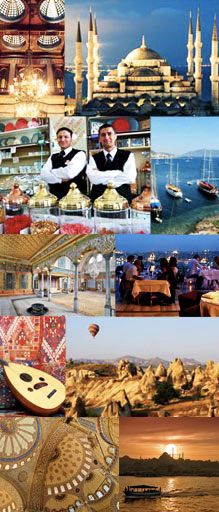 Hailed as the “City of the World’s Desire,” Istanbul is where the East meets the West. A sprawling metropolis spanning two continents, it was the capital of two mighty empires, the Ottomans and the Byzantines, and it seems to continually reinvent itself. Currently, you’ll find a modern centre with some of the world’s greatest shopping, food, and nightlife. It’s one of the sexiest cities in the world and the word fusion is regularly used, as the city does fuse the old and the new impeccably.
Hailed as the “City of the World’s Desire,” Istanbul is where the East meets the West. A sprawling metropolis spanning two continents, it was the capital of two mighty empires, the Ottomans and the Byzantines, and it seems to continually reinvent itself. Currently, you’ll find a modern centre with some of the world’s greatest shopping, food, and nightlife. It’s one of the sexiest cities in the world and the word fusion is regularly used, as the city does fuse the old and the new impeccably.
The perfect day starts waking up, with the sight of the exotic architecture, then grab lunch and check out some of the newest galleries and museums sip champagne at sunset on the Bosporus, and during the night, when the city becomes electric, eat and drink amongst a stylish jet set crowd. If you’re more apt to stay low key, Istanbul still provides the traditional taverns and tea gardens, where you can still enjoy the traditional side of this amazing city. Without a doubt, after leaving you’ll desire to return again soon.
HISTORY
What is now the Asian side of Istanbul was inhabited by people as early as 3000 BC. In the 7th century BC, the Greeks established the colony and named it Byzantium. The area had been much overlooked, so the early establishment of a city by the Greeks ended up being auspicious, as the location proved to be quite important for trade and commerce. In the First Century BC, it became part of the Roman Empire and in 306 AD, Emperor Constantine made Byzantium the capital of the entire Empire and named it Constantinople. The mid 400s AD became a period of change, as Barbarians conquered the western Roman Empire while the Eastern held its ground and kept Constantinople as its capital. In 532 antigovernment riots destroyed the city and during the rebuilding, structures such as Hagia Sophia still stand as monuments to the great heights Byzantine culture.
Although the location proved to be prosperous because of its location between three continents, this proved to be a negative, as it was constantly being attacked by people from those three continents, such as Arabs, Persians, and members of the Fourth Crusade. Weakened by heavy battle, the Ottoman Turks lead by Sultan Mehmet II conquered Constantinople in 1453. It was renamed Istanbul and became the third and last capital of the Ottoman Empire. It became the main reason why the Ottoman Empire grew so dramatically. and reach a population of almost half a million in the mid 1500s. The Ottomans remained in control until World War One.
When the Republic of Turkey was born in 1923 after the War of Independence, Kemal Ataturk moved the capital to the city of Ankara. But Istanbul has continued to expand dramatically; today its population is approximately 13 million and increases at an estimated 700,000 immigrants per year. Industry has expanded even as tourism has grown. It continues to be a city that creates its own history.
